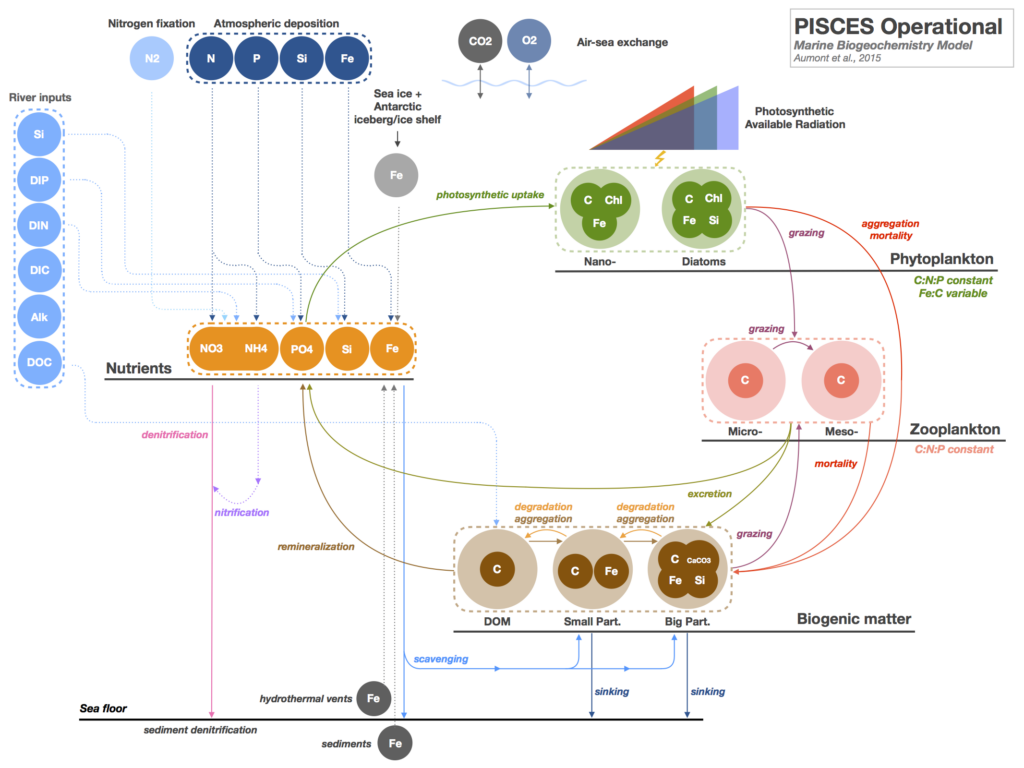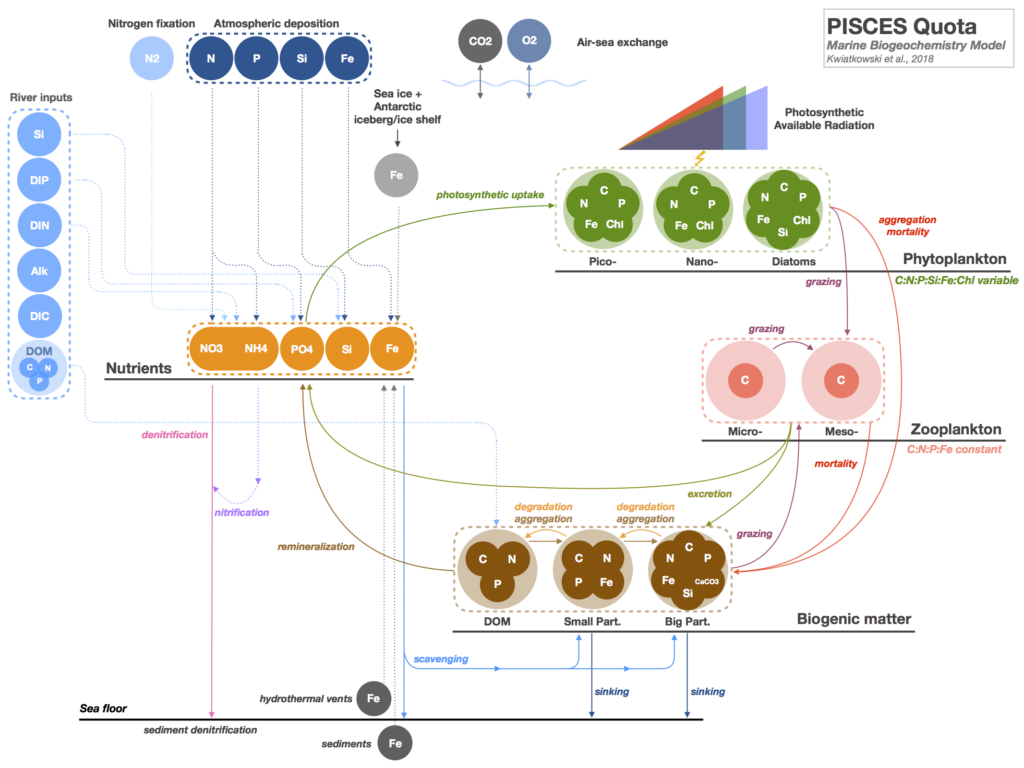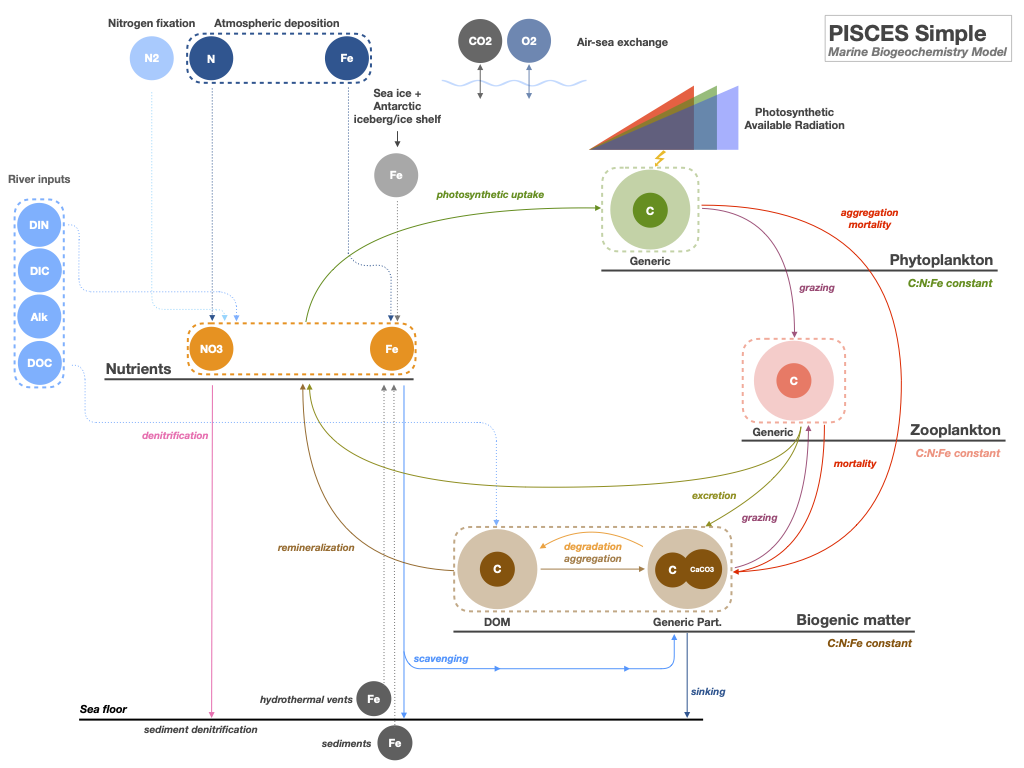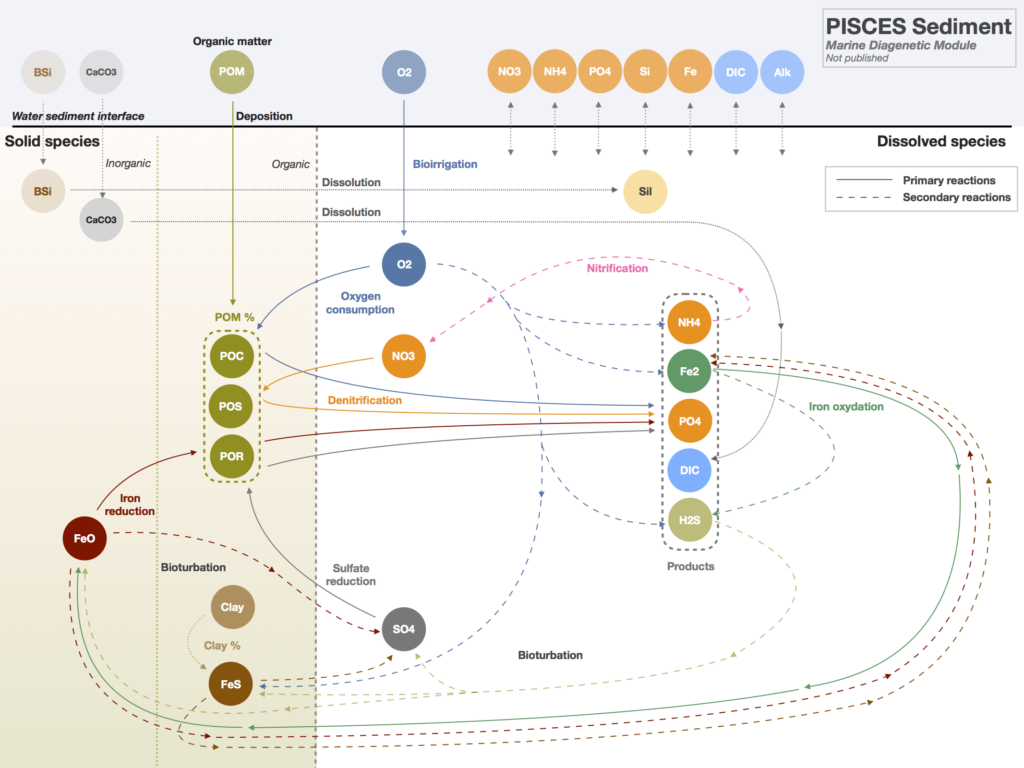PISCES Operational
PISCES is a biogeochemical model that simulates marine biological productivity and describes the biogeochemical cycles of carbon and of the main nutrients (P, N, Si, Fe). In its standard “operational” version (Aumont et al., 2015), PISCES can be seen as a mixed monod-quota model (Droop, 1983; Monod, 1942). Phytoplankton growth is predicted using the Monod approach for N, P and Si and the quota approach for Fe.

PISCES Quota
A full quota version of PISCES is also available (Kwiatkowski et al., 2018) provided to the community together with the operational, more simple, version. This quota version of PISCES includes a quota-based description of phytoplankton growth with fully variable C:N:P:Si:Fe:Chl ratios. In addition, the basic structure of the model is modified with the addition of a third phytoplankton group, namely picophytoplankton. This version is built upon the standard version of PISCES and as such, shares many functionalities with it.

PISCES Simple
A simplified version (NPZD) of the operational version of PISCES has recently been developed (2023). It models the marine biogeochemical cycles of 9 prognostic tracers, including a generic group for phytoplankton and zooplankton, and includes the Fe cycle for a better representation of primary production in iron-limited regions.

PISCES Sediment
A prognostic diagenetic module is existing in the standard version of PISCES and can be optionally activated if wanted. This module is a 1-D time-dependent coupled model of early diagenetic reactions in the surface sea-floor sediments. It explicitly describes organic calcium carbonate, biogenic silica and organic matter cycling and the associated dynamics of some important terminal electron acceptors (O2, NO3, FeOOH and SO4). This module can be run with PISCES in a coupled or uncoupled mode, or can be run in a standalone mode without PISCES.


